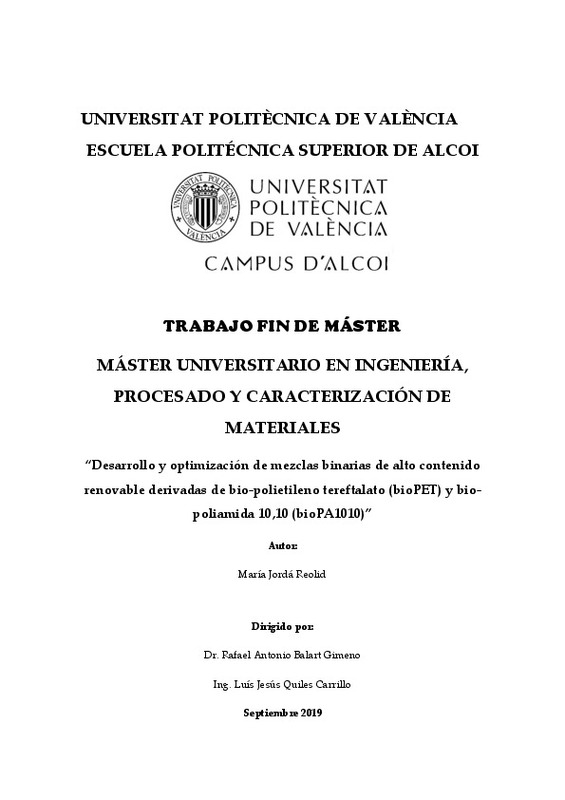JavaScript is disabled for your browser. Some features of this site may not work without it.
Buscar en RiuNet
Listar
Mi cuenta
Estadísticas
Ayuda RiuNet
Admin. UPV
Desarrollo y optimización de mezclas binarias de alto contenido renovable derivadas de bio-polietilén tereftalato (bioPET) y bio-poliamida 1010 (bioPA1010)
Mostrar el registro completo del ítem
Jordá Reolid, M. (2019). Desarrollo y optimización de mezclas binarias de alto contenido renovable derivadas de bio-polietilén tereftalato (bioPET) y bio-poliamida 1010 (bioPA1010). http://hdl.handle.net/10251/129785
Por favor, use este identificador para citar o enlazar este ítem: http://hdl.handle.net/10251/129785
Ficheros en el ítem
Metadatos del ítem
| Título: | Desarrollo y optimización de mezclas binarias de alto contenido renovable derivadas de bio-polietilén tereftalato (bioPET) y bio-poliamida 1010 (bioPA1010) | |||
| Autor: | Jordá Reolid, María | |||
| Director(es): | ||||
| Entidad UPV: |
|
|||
| Fecha acto/lectura: |
|
|||
| Resumen: |
[ES] En este trabajo se estudia el comportamiento de diferentes mezclas binarias compuestas por bioPET y bioPA, con el objetivo de optimizar un material con un alto contenido renovable. Para ello, tras procesar estas mezclas ...[+]
[EN] In this work we study the behaviour of different binary blends composed of bioPET and bioPA, with the objective of optimizing a material with a high renewable content. For this purpose, after processing these blends, ...[+]
|
|||
| Palabras clave: |
|
|||
| Derechos de uso: | Reserva de todos los derechos | |||
| Editorial: |
|
|||
| Titulación: |
|
|||
| Tipo: |
|
recommendations
Este ítem aparece en la(s) siguiente(s) colección(ones)
-
EPSA - Trabajos académicos [5826]
Escuela Politécnica Superior de Alcoy







